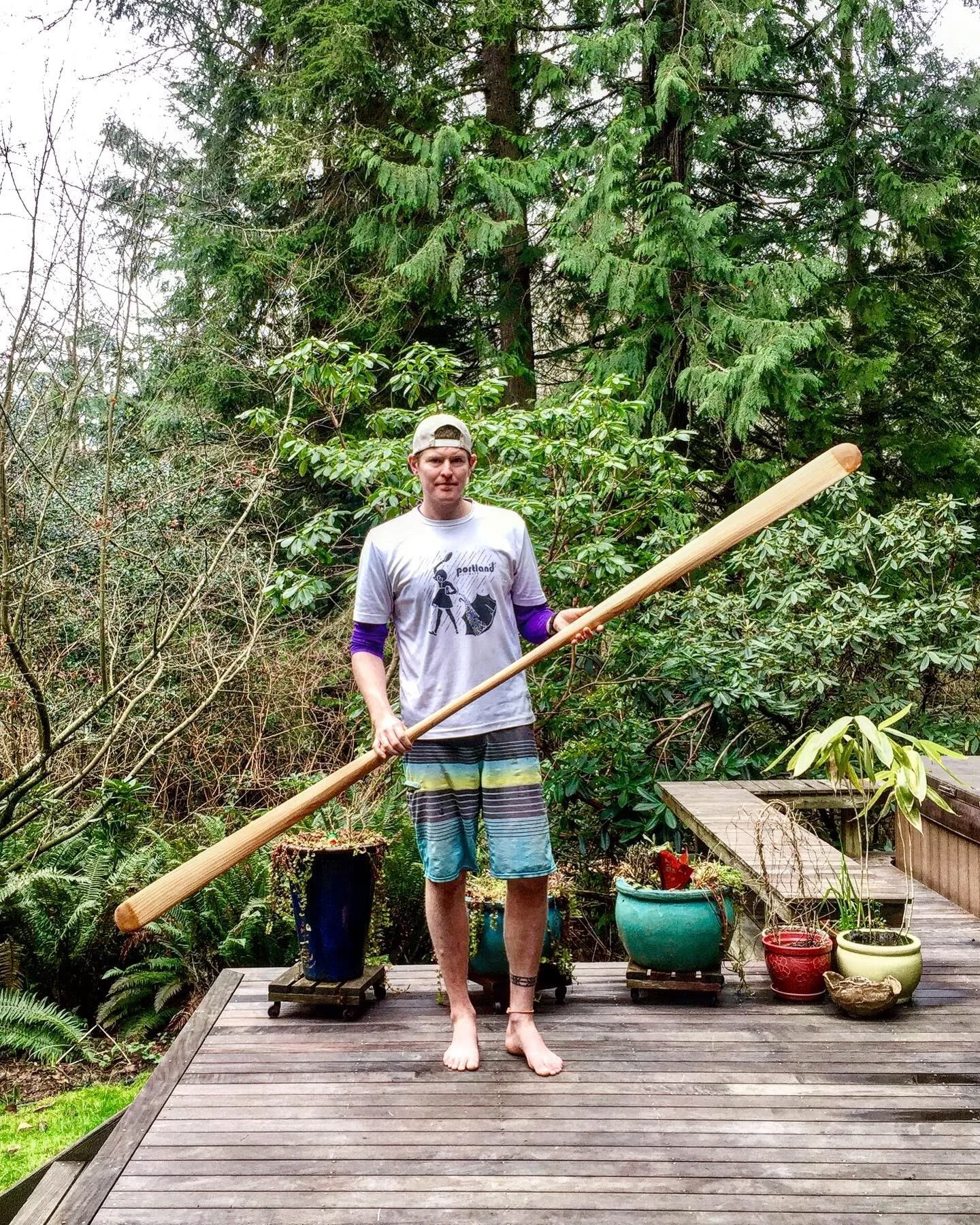About Greenland Paddles
Greenland sea kayaking paddles have been around for a long time and were some of the first paddles used by kayakers. The paddles were a tool for transportation, hunting, and survival on the frigid northern waters. The kayakers would often have to travel in deep open water for long distances to hunt, trade, and travel. The paddles themselves were made from prized pieces of drift wood where wood was scarce in the far north. The Greenland style of stick features a long skinny blade, sometimes with bone tips and edges on the paddle for blade protection. The skinny blade was ideal for cutting through wind from different directions, long distance paddling due to its ability to gain power throughout the paddle stroke, and rolling kayaks which gained its advantage from being able to extend ones reach holding onto the blade itself.
The Greenland sea kayaking paddles that are made by myself are hand crafted from pacific northwest cedar 2x4s. The paddles taper from tip to loom with no shoulders. The tips are fitted with hard wood for protection from blades splintering. The goal of my paddles are to be lightweight as possible, while still strong and performance oriented. Choosing proper boards is the first step. Boards with knots create stress concentrations in the paddles and make them more likely to break. Choosing to taper the paddles from tip to loom spreads the stress out along the hole length of the paddle while a paddle with shoulders directs more of the force into the loom of the paddle. Every paddle is made from a different piece of wood. This causes not every paddle to be exactly the same because different trees live different lives. Boards will have different grain directions, grain sizes, and even color resulting in a different “feel” or characteristic changes. when buying a paddle the flex rating will give you an idea of the feel of the paddle.
On an environmental note, Wyrd paddles looks to make decisions that best help the environment. Every paddle is biodegradable with the two main components being wood and organic tung oil. The wood boards are locally sourced and sometimes used from scrap wood of larger projects from the mill. For suggestions on ways to be more environmentally friendly feel free to shoot me a message
